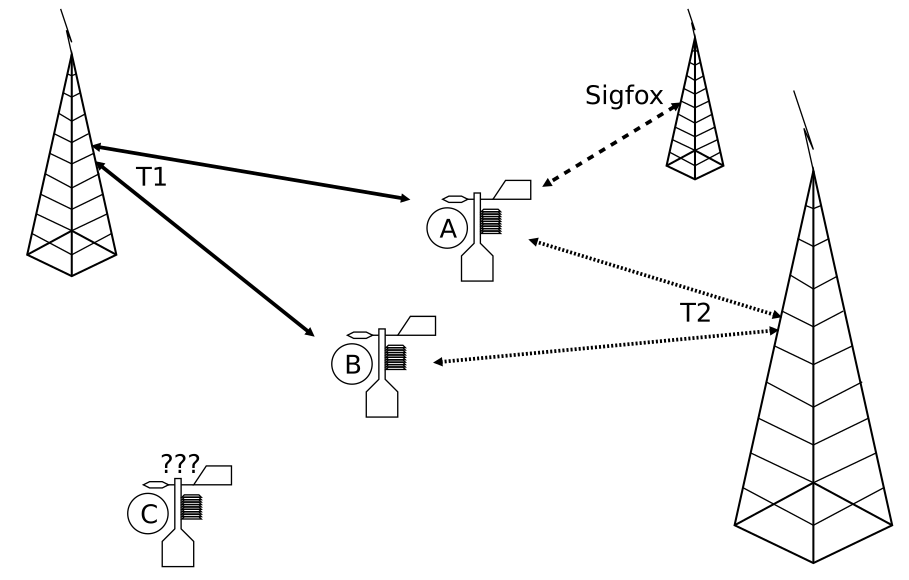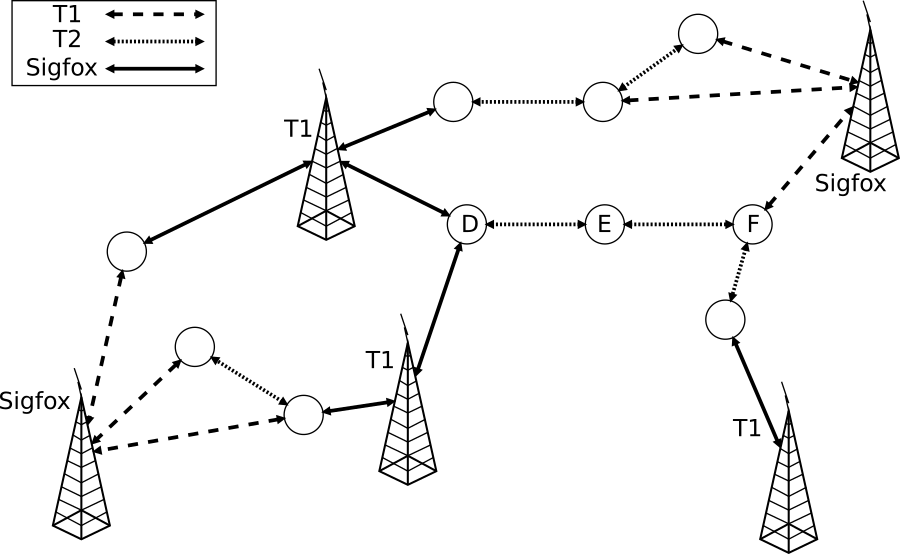by Brandon Foubert and Nathalie Mitton (Inria)
In the context of smart farming, communications still pose a key challenge. Ubiquitous access to the internet is not available worldwide, and battery capacity is still a limitation. Inria and the Sencrop company are collaborating to develop an innovative solution for wireless weather stations, based on multi-technology communications, to enable smart weather stations deployment everywhere around the globe.
The French company Sencrop [L1] aims to help farmers in their hard daily work [1]. Sencrop manufactures and sells weather stations that autonomously collect data to help farmers accurately forecast the weather (e.g. risk of frost) and make sound decisions for the crop cycle (requirements for watering, fertiliser, etc). These stations collect accurate parcel-specific weather-related data, such as temperature, pluviometry, humidity, wind speed, etc. They rely on batteries that cannot be easily recharged or replaced regularly. Therefore, the Sigfox wireless technology is used to send the sensed data to the internet [L2]. Sigfox technology enables long range communications at a low energy expenditure. The Sigfox base stations to which the weather stations offload their data are deployed around the world to provide connectivity to customers.
But these advantages do not come without a price. Sigfox operates on the unlicensed ISM radio bands, which limits the time that a radio transceiver can emit by law. Sigfox technology thus suffers from low data rates and asymmetric wireless links. Furthermore, the Sigfox base stations are not yet deployed worldwide.
Sencrop weather stations require a worldwide ubiquitous network access to assist any farmer anywhere on Earth, but the coverage provided by Sigfox is insufficient. Furthermore, Sencrop needs to remotely upgrade the devices’ firmware once a station is deployed; Sigfox can handle a small volume of regular monitoring data but is not equipped to support a whole firmware.
Indeed, the main issue faced by Sencrop is how to extend the current coverage and enable a bi-directional connectivity to the weather stations whilst limiting the energy consumption of devices. One possible solution is a weather station that integrates several wireless communication technologies, each providing different characteristics (delay, data rate, energy consumption, etc.), enabling the station to use the most appropriate technology for any given type of data to be sent.
As depicted in Figure 1, weather station “A” can reach Sigfox, as well as alternative technologies T1 and T2, and can autonomously pick the one that best suits its data requirements. T1 offers a large data rate and a bidirectional connectivity but with a high energy expenditure. It will be used for exceptionally large amounts of data, such as a firmware upgrades. T2 will only be used to send urgent data such as an alarm because it provides low delays at the cost of a medium energy consumption. Finally, Sigfox that features long delays and small data rates but benefits from a low power expense will be favoured for sending frequent and regular monitoring data. This solves the aforementioned issues, as station B which is not in range of the Sigfox network can still use the other two technologies.

Figure 1: Autonomous multi-technology stations. A, B and C are weather stations. T1, T2 and Sigfox are different wireless techonologies.
But this solution raises other issues. Adding wireless technologies and the ability to switch from one to another consumes energy and processing capabilities, resources that are limited on Sencrop stations. Moreover, stations are still dependent on a direct link to a base station. Areas deprived of any communication capability still exist on our planet in isolated rural environments. Inria and Sencrop jointly address this exciting challenge by designing a joint smart network interface selection, and a multi-hop multi-technology routing mechanism. It will dynamically adapt the data forwarding according to the local environment (remaining energy, connectivity, etc.) and the importance of the data by respecting environmental and hardware limitations of each station.

Figure 2: Multi-hop multi-technology network. D, E and F are weather stations. T1, T2 and Sigfox are different wireless technologies.
As depicted in Figure 1, if a station is isolated, such as station C, it may still be in the vicinity of another station, like B, through which it can reach a base station. This mechanism will not only extend the network coverage, but also save power and alleviate network traffic. Indeed, instead of using energy intensive long communication links, a data packet can follow a suite of more energy efficient smaller ones. For instance in Figure 2, station D can choose to offload its data through E and F (technology T2) and then to the base station (Sigfox) which might be less energy costly than using the direct link T1 to the base station. Stations will not only have to choose which wireless technology to use autonomously, but also to which neighbour they send their data to satisfy the data requirements.
This system is expected to improve the overall energy efficiency of Sencrop stations and enable a broader deployment to assist farmers with smart connected things everywhere around the globe.
This work was partially supported by a grant from CPER DATA, Sencrop, FEDER and I-SITE.
Links:
[L1] https://sencrop.com/en/
[L2] https://www.sigfox.com/en
Reference:
[1] A. Gregoire: “The mental health of farmers”, Occupational Medicine, Vol. 52, Issue 8, 2002, p. 471–476, https://doi.org/10.1093/occmed/52.8.471
Please contact:
Brandon Foubert
Inria Lille, France
+ 33 3 59 57 79 43











